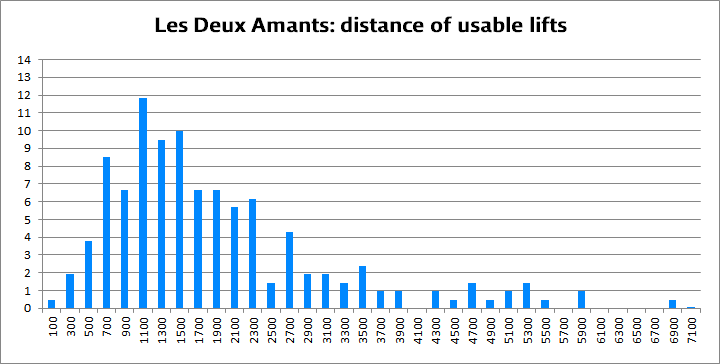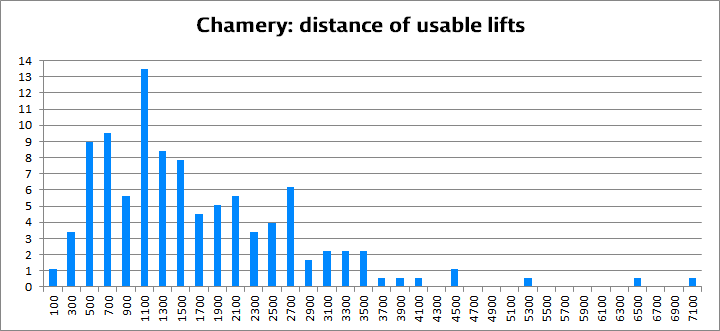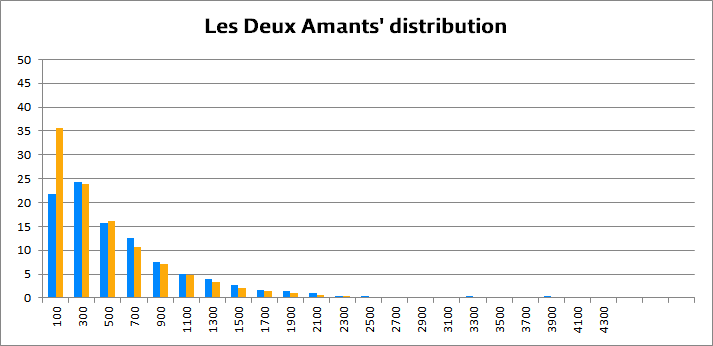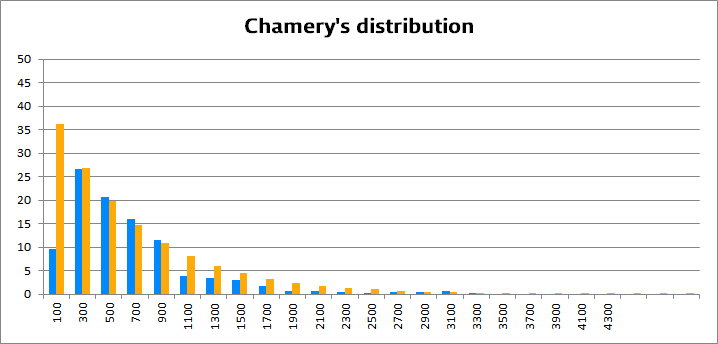In former articles, we have demonstrated that this convective layer moves as a block, shifting at a speed that changes slowly during the day. The updraft columns are moving with the CBL at a slightly different speed. Looking at paragliders GPS tracks, one can easily detect zones where pilots have been staying, circling in an updraft to get altitude. From a thermal to the next one, the transition is rather straightforward but, even in those segments, there are zones where the vario is positive. As the fall rate of the glider in straight line is known, it is easy to calculate the vertical speed of air along the track. During transitions, there are places with positive vertical speed, even with positive vario. All these zones are called "updrafts".
When the pilot stays in an updraft, circling one time or more, that zone is accounted for one unique updraft. Thanks to verticalization of each circle, the average wind speed inside the convective CBL has been calculated for any moment of the flight. Comparing the results obtained from each flight, one can evaluate the accuracy of the method. The difference between different pilots does not exceed 0,1 mph in speed and 2 degrees in direction as differences between each individual circle are much bigger.
Distances between updrafts are not geographical distances. They have been calculated after correction by the average wind. They are distances relative to the CBL (air distances).
For a flatlands pilot, distance between updrafts is critical. Not all updrafts can be used. The vertical air speed has to be higher than the sink rate of the paraglider. Circling needs a minimum span of the thermal. And even during a sunny day, there are large zones without any updraft. They are critical for the success or the failure of a distance flight.
In order to study the distance between thermals, we have selected two days the French distance record was broken. On those days few pilots have exceeded 150 miles and even 230 miles for the records. For each day we have selected the tracks of four pilots who started from the same take-off but flew independently.
On May 1 2016, Martin Morlet started from la côte des Deux Amants near Rouen, with a wind north to NNW, and landed at the beginning of Massif Central. The four tracks were analyzed along a distance of 120 miles well after river Loire.
The tracks of May 13 2019 were interesting. Pilots started from Chamery, near Reims. Wind was NNE. Three pilots landed at river Loire. Fred Delbos continued to Massif Central and broke the French record. For the needs of comparison, Fred track has been limited to river Loire.
For both days, wind was rather strong climbing from 12 to 15 kts (and even 20 kts over Massif Central).
All the thermals have been checked. For that, we started from GPS altitude averaged during ten seconds. From that, we obtained the vario, positive or negative. As the sink rate of the paraglider is rather well known (3 to 3,5 fps), we could calculate the vertical speed of the local atmosphere. When a pilot stays in an updraft for one or more circling that part of the track is accounted for only one updraft.
Updraft position is taken as the average between entry point that is to say the point of the transition where the vertical air speed becomes positive and exit point where it becomes negative.
It comes a list of distances for the tracks of the day. The distances are sorted by classes: one class every 200 meters. The 100 class include all the distances between zero and 300 meters, the 300 class all the distances between 200 and 400 meters and so on. So, it is possible to count the number of distances by class to define a statistical distribution.


In blue, the statistical distribution of distances. In red, the best decreasing exponential distribution.
The number of distances by class fits well with the decreasing exponential excepted for the 100 meters class. But one has to keep in mind that altitudes have been filtered for ten seconds. As horizontal speed of paragliders is about 10 meters per second, the majority of ascents of less than 100 meters span are neglected.
The decreasing exponential distribution is not a surprise for a turbulent thermal CBL (Kolmogorov K41 theory, Obukhov, Deardorff). Consequently, average distance between thermals in not very convenient. But one can observe that each day has a specific profile. The Chamery day has a higher proportion of short distances which means probably a more confused CBL. The average flight altitude is 4250 feet for les 2 Amants and only 3280 for Chamery. Similarly, the CBL thickness has been evaluated at 4920 feet for les 2 Amants and 4250 for Chamery.
For the distance pilot, the trick will be to select updrafts with enough potential to circle efficiently.
With track analyses, one can select zones where the vario is positive. We call them “usable lifts” even if their span is not large enough to be circled. The same statistical work as before give the following results:


The ordinate figure gives the proportion of usable lifts after abscissa distance. Many distances occur between 700 and 1500 meters but it occurred many times where the pilot did not cross any usable lift during 4500 meters and even 6000 meters.
During both days, the most probable distance was found around 1100 meters, but at Chamery one finds many distances in the 500 and 700 class and less in the 1700 and 1900 class which are the most favorable for distance flights. With a CBL thickness of 4200 or 4900 feet, a four miles transition represent a major risk. For a paraglider of finesse 10, such a transition represents a loss of 2400 feet. It will not be easy to find at this altitude a thermal strong enough to recover. Probably, this is the reason why, during these two days and height top distance pilots, there is no distance over four miles.
These results give a good image of the CBL structure with many exploitable distances in the same order of magnitude as the CBL thickness. But this image is not totally objective since pilots are not flying randomly. On the contrary, they look for CBL zones where they hope to have better chances to find thermals.




